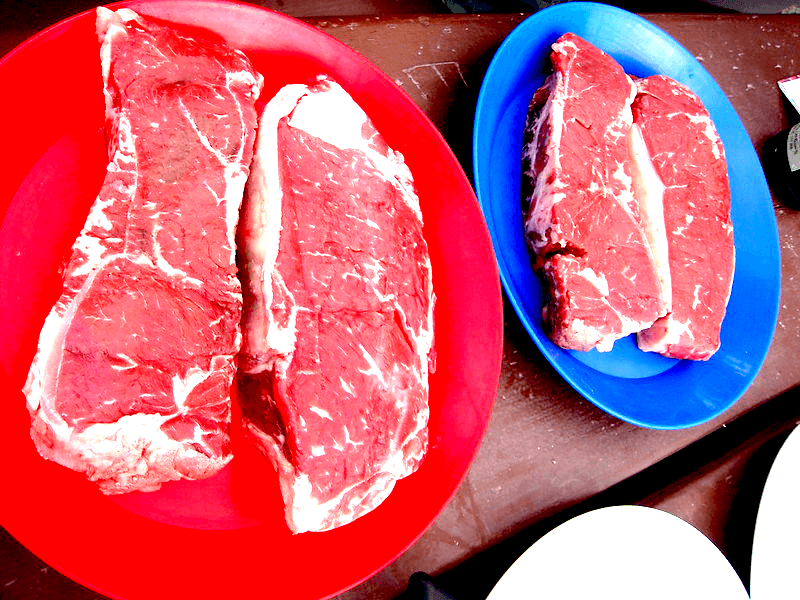
Photograph Source: velkr0 – CC BY 2.0
Thanks to animal welfare groups, most people are now aware of “factory farms.” Concentrated animal feeding operations or CAFOs abuse workers, animals, the environment, human consumers and even our tax dollars. (How? Price supports and government bailouts when diseases occur.) Thanks to greedy CAFOs crowding, diseases killed one-tenth of all US pigs and millions of chickens and turkeys a few years ago.
The public is less aware of “animal Pharma”– and the breadth of livestock diseases that are treated with drugs. For example Merck markets 49 vaccines for poultry alone to prevent diseases like fowl pox, turkey coryza, bursal disease, coccidiosis, laryngotracheitis, hemorrhagic enteritis, avian encephalomyelitis of course salmonella and E. coli. Yum.
It also markets at least 25 vaccines to prevent cattle diseases and an entire schedule of vaccines for pigs including Argus® SC/ST Avirulent Live Culture, “an aid in the prevention of pneumonia, diarrhea, septicemia and mortality caused by Salmonella choleraesuis and as an aid in control of disease and shedding of Salmonella typhimurium.” It even markets vaccines for use in aquaculture.
More than 90 percent of broiler chickens in the US are vaccinated “in ovo” against diseases like Marek’s, Gumboro and Newcastle meaning they are vaccinated as embryos, though the public is largely unaware of this. “In ovo” grafting is also performed–for example injecting quail tissue cells into non-quail chicks– to create brave new animals. Chimeras, clones and transgenic animals are seldom covered in the mainstream news but they are no longer rare.
Vaccines are also made from “GMO” spores which an article in Veterinary Research admits could “raise environmental concerns” because the spores have “the potential to survive indefinitely in the environment.”
Antibiotics Have Stopped Working Due to Superbugs They Created
The use of tons of antibiotics on CAFOs has kind of “killed the goose that laid the golden egg.” As the drugs cease to work in people and animals from their farm overuse, Pharma is pushing vaccines to replace them. Meat producers like the fact that if they use vaccines they can actually say they use “no antibiotics” and play to health conscious food buyers. In fact, a 2015 marketing study estimated the global animal-vaccine market will be worth $7.2 billion by 2020, up from $5.5 billion in 2010.
US meat is also full of hormones like oestradiol-17, zeranol, trenbolone acetate and melengestrol acetate. These synthetic growth hormones are central to US beef production and the reason Europe has banned a lot of US meat since 1989. Yes, Europeans won’t eat what Americans eat every day.
Melengestrol acetate is 30 times as active as natural progesterone, says the European Commission (EC) and trenbolone acetate, a synthetic androgen, is several times more active than testosterone. Trenbolone acetate, administered as ear implants, has been found in male fathead minnows who lived near a Nebraska feedlot that discharged its polluted water into the environment.
While the drugs used in US meat production do not appear on the label, they should. Antibiotics, which have been found lurking in the meat, have been linked to drug resistance and superbugs, obesity, asthma and compromised gut bacteria. Vaccines have been linked to oxidative stress and harm from exposure to heavy metals.
And hormones? “The highest rates of breast cancer are observed in North America, where hormone-treated meat consumption is highest in the world,” says the EU’s Scientific Committee on Veterinary Measures Relating to Public Health. The committee adds that the same metrics apply to prostate cancer.
How many people would eat US meat if these drugs were clearly marked on the label?